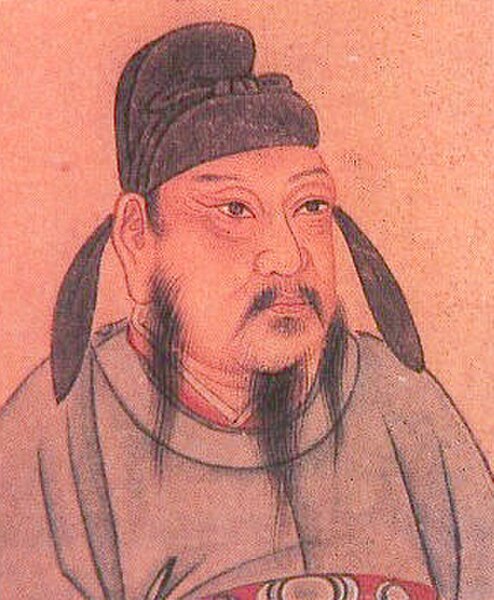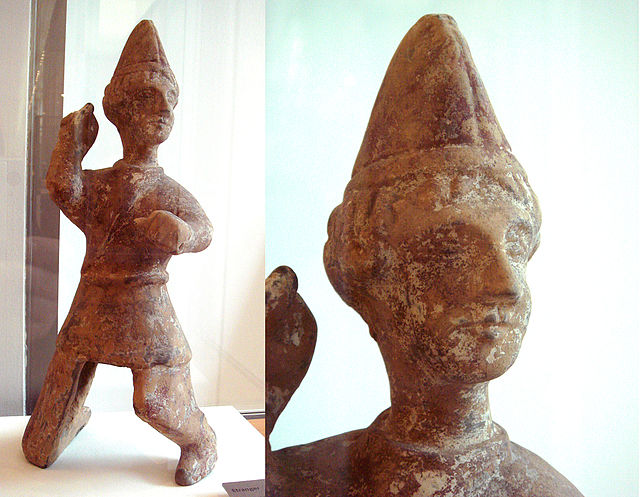Futou, also known as fu (幞) and toujin (頭巾), was one of the most important forms of Chinese headwear in ancient China with a history of more than one thousand years. The futou first appeared in Northern Zhou under the reign of Emperor Wu where it became prevalent. It was also commonly worn in the Tang and Song dynasties. The futou was typically worn by government officials. The futou was originally turban-like headwear which was tied at the back of its wearer's head, with the two corners going to opposite directions and acting as decorations. From the Sui to the Ming dynasties, the futou evolved and was developed based on the fujin. The futou eventually came to assume a variety of shapes and styles. The shape of the futou worn by the government officials in the Song and Ming dynasties, the latter known as the wushamao (烏紗帽), was based on the futou of the Tang dynasty.
Eunuchs wearing yuanlingshan and futou, Tang dynasty
Wushamao (a type of futou), housed in Shanghai Museum
Example of Tang dynasty futou
Jinzi-lining worn with the futou
Hufu, also referred as Hu clothing, nomadic dress, 'barbarian' clothing or dress, or foreign dress, is a generic term which refers to any clothing which was worn in ancient China and its surrounding regions by non-Han Chinese people. This term is also used to refer to clothing of foreign origins in ancient China. The introduction of Hufu-style garments and attire in China occurred by the time of King Wuling of Zhao.
A foreign Sogdian soldier wearing a curved collar (曲领) short robe, Eastern Han, early 3rd century.
Figurines from Northern Wei. On the left: Foreign fashion lapel robes On the right: Foreign-influenced or foreign-style cross-collared robes closing to the left side instead of the right side. Traditionally, Chinese style upper garment closes to the right.
Some paintings of the Ming dynasty depicts the Han Chinese with zuoren clothing, an atypical feature
Xiongnu leather robe closing to the left side (zuoren), Han period.








